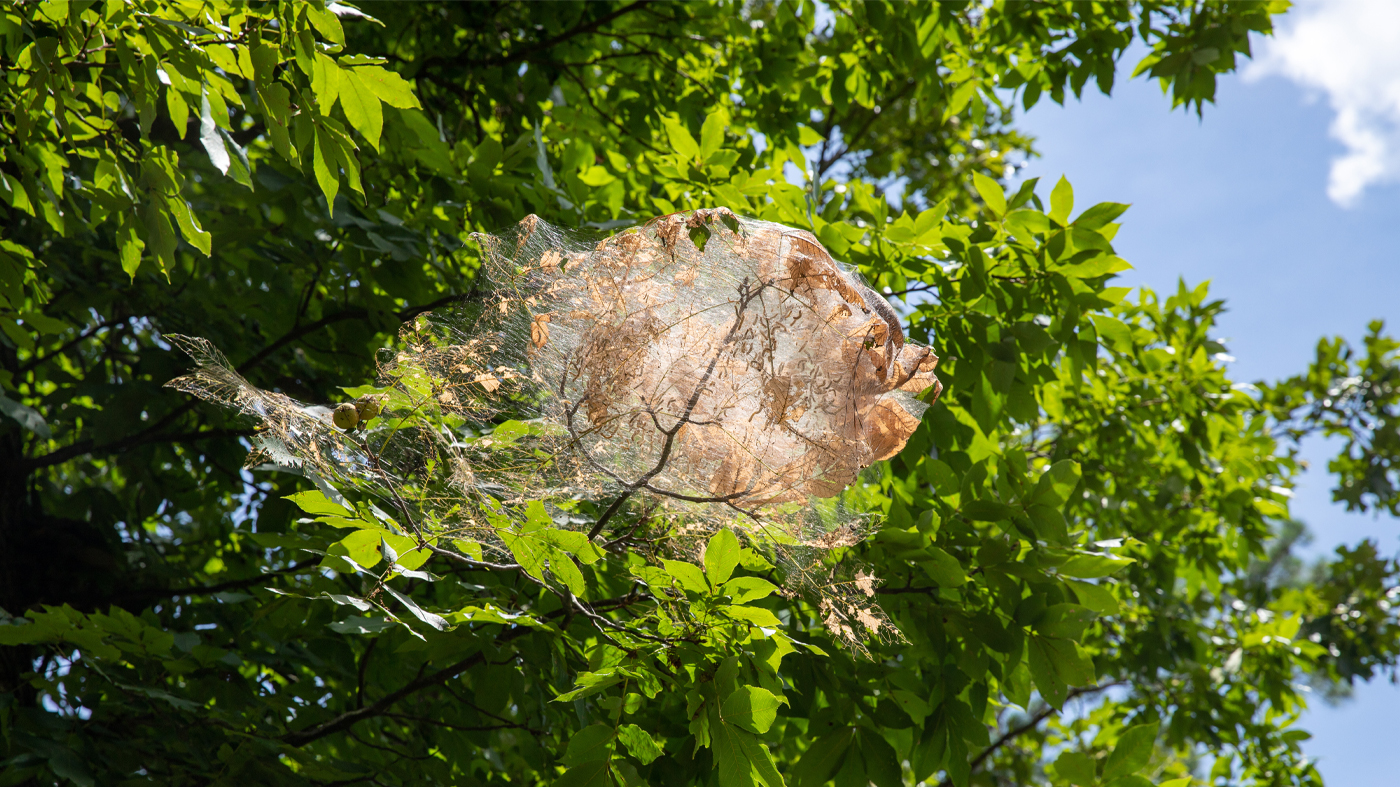Susceptible Plants
Most deciduous trees
Description & Symptoms
Fall webworms form large, prominent whitish-gray webs at the ends of branches of deciduous trees. The location of the webs on the outer canopy distinguishes the fall webworm from the eastern tent caterpillar, which nests in webs in the crotches of trees.
Timing & Life Cycle
Webworms spend the winter as pupae in leaf litter and loose bark. In late May and June, the adult moths lay their eggs, usually on the underside of leaves. These eggs hatch into larvae, which eat leaves and form webs as they grow. By late summer, the webs are large and visible. The larvae, which never leave the webs, consume entire leaves.
Damage
Damage is minimal because the most extensive feeding occurs in late summer when trees will soon drop their leaves anyway. Although the webs can be unsightly, healthy trees are not seriously harmed by fall webworms.
Treatment & Solutions
Fall webworms have many natural predators, including birds, social and parasitic wasps, and other insects. Insecticide treatment is rarely warranted. Webs may be pruned out of trees and destroyed.
For additional information on fall webworms, please contact Plant Information Services at (847) 835-0972 or email.


